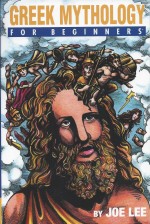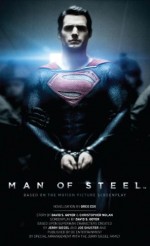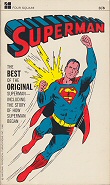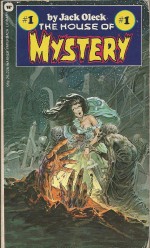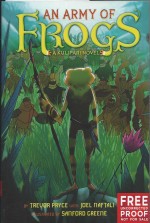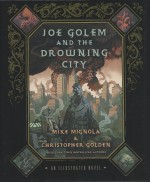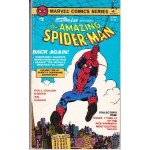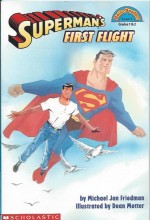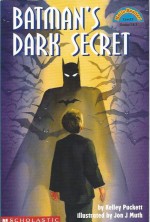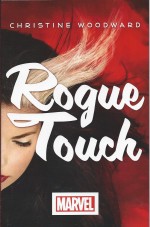
By Christine Woodward (Hyperion)
ISBN: 978-1-4013-1102-5
It seems that the signature genre of comics – the superhero – has at last gained some degree of literary legitimacy. Even if you ignore the collected pulp exploits of Doc Savage or The Shadow, or the assorted novelisations and prose forays from funnybook publishers capitalising on the early success of series like Wild Cards with their own key brands, the timbre of modern times has allowed costumed do-gooders and crazed masterminds to finally break into “real†publishing.
Now even proper book companies have many titles that blend crime, horror, science fiction and the peculiarly comicbook cult of the Over-Man into their mainstream fare.
With that in mind here’s something a little different and probably more in tune with the tastes of female readers, Young Adults and those fans possessing only a passing familiarity with X-Men continuity.
LET ME BE SPECIFIC. THIS IS A NOVEL. THERE ARE NO PICTURES INSIDE.
In the Marvel Universe Rogue was first seen as a member of the Brotherhood of Evil Mutants: a disturbed young girl cursed with a power that stole abilities and memories from anybody who touched her skin-to-skin.
It was an ability she could not control or turn off, and any overlong fleshy contact resulted in the victim falling into a coma with their entire history and essence drained into her. Rogue then became a reluctant jailer with stolen powers and personalities locked in her head forever.
Played as a “bad-girl†and mystery woman for years, Rogue grew to become one of the most popular characters in the excessively large X-cast, winning her own miniseries where it was first revealed that as a young girl her powers manifested just as she was kissing her first love Cody Robbins…
With the boy she wanted imprisoned in her head whilst his body permanently shut down, the girl knew she was a freak and monster who must never again experience human contact…
This novel picks up a little later and never mentions any aspect of the Marvel Universe as it begins the story of 20-year old Anna Marie: a reluctant recluse working a dead-end night job at a small bakery in Jackson, Mississippi.
Always wrapped head-to-toe in many layers, the odd night owl one night sees a weird lurking man almost waiting for her. She takes steps to avoid him, the way she avoids everybody who might accidentally touch her and suffer the horrific consequences…
However the non-incident rattles her and gives boss Wendy Lee an excuse to fire her…
All but unemployable and strapped for cash, Anna Marie is forced to apply for food stamps, but waiting in line she sees the same creepy, good-looking guy. However when she challenges him she inadvertently calls attention to the fact that he’s pulling some kind of scam and security guards chase him from the building.
She sees her stalker again on the streets and realises that even in the Mississippi heat the guy is cold and really, really hungry. Without really knowing why, she gives him some of her food stamps…
Over the next few days they keep meeting and become friendlier, but James is a strange and cagy man with an accent she can’t place and the weirdest gaps in his knowledge of everyday life.
Her prospects don’t improve and one night, reduced to desperation, Anna Marie breaks into the bakery, intent on taking food to the value of the severance check she didn’t get. Tragically, Wendy Lee discovers her and in the scuffle makes contact…
Now with a young boy and an old lady stuck in her head, the horrified, guilt-ridden girl realises she has to steal a car and get out of town as soon as possible …and that’s when James drives up, offering her a ride to anywhere she wants…
Thus begins an epic and immensely engaging rollercoaster ride across America as the mismatched loners discover each other and the incredible secrets both are concealing. He prefers to be called “Touch†rather than James and has impossible gifts too. As she slowly allows herself to love the boy, “Rogue†– as he insists on calling her – is forced to accept just how much of a stranger he is… especially once the super-scientific pursuers and monster animals chasing him start to close in on her too.
He also knows far more about her than he at first let on…
Draped in the eternal allure of two kids in love and on the run, and designed to attract readers raised on Roswell High, Sookie Stackhouse, Twilight and generations of road-buddy movies, in Rogue Touch Christine Woodward successfully translates the X-Men’s memory-&-power-leeching Southern Belle into a compelling, alienated but ultimately powerful, self-reliant and triumphant woman in an increasingly fantastic and dangerous world.
Immensely readable and engaging, this is a supremely cunning and clever confection: easily affixable to Marvel’s mutant mythology should you be so inclined, but also a completely self-contained science fiction/young romance thriller that will delight the aficionados of all those so-successful alienated teen prose franchises. There’s even room and scope for a sequel or two…
™ & © 2013 Marvel and Subs. All Rights Reserved.

